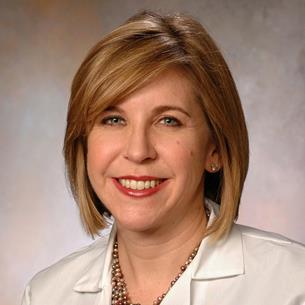Meeting
2023 ASCO Annual Meeting

The University of Chicago, Chicago, IL
Tara O. Henderson , Jenna K. Bardwell , Pei-Chi Kao , Paul C. Nathan , Wendy Landier , Sogol Mostoufi-Moab , Tara M. Brinkman , Julie R. Park , Saro Armenian , Arlene Naranjo , Meera Subramaniam , Araz Marachelian , Sharon Diskin , Wendy B. London , Lisa Diller
Background: Aggressive therapies for high-risk neuroblastoma (HRNBL) have resulted in increased survival, but late effects have not been well-characterized. Methods: Comprehensive cross-sectional evaluation of health outcomes in HRNBL survivors enrolled on the COG Neuroblastoma Biology Study after 1/1/2000 and ≥ 5 years from primary diagnosis, using medical record abstraction and in-person clinical assessments. Descriptive and multivariable analyses identified extent of and risk factors for late toxicity. Results: There were 375 participants from 88 COG centers, 205 (55%) male; 92 (26%) non-white; 45 (13%) Hispanic. Median age at neuroblastoma diagnosis was 2.5 years (range: 0.2-15.8), at enrollment was 12.0 years (range: 5.0-24.0). All had received chemotherapy; 94% received cisplatin (median dose: 398 mg/m2). Other exposures included: radiation (95%), isotretinoin (91%), anti-GD2 antibody therapy (64%), MIBG (7%), single (79%) or tandem autologous transplantation (ASCT; 20%). ASCT conditioning included: Busulfan/Melphalan (BuMel) (18%), Carboplatin/Etoposide/Melphalan (CEM) (73%), Thiotepa/Cytoxan (19%), and total body irradiation (5%). Severe ototoxicity (requiring hearing aids) was observed in 58% of participants. Physician-reported late effects included hypothyroidism (17%), pulmonary hypertension (1%), congestive heart failure (2%), and hypertension (6%). Pulmonary Function Studies revealed restrictive lung disease [RLD - Total Lung Capacity < 70% predicted] in 8% of subjects. Laboratory study showed elevated creatinine in 7% and Hemoglobin A1c in 7%. Growth failure (height Z-score < -1.7) was observed in 34%. Subsequent malignant neoplasms (SMN) developed in 15 participants (4%; 4 sarcomas, 3 MDS/t-AML, single instance of 8 other malignancies). Adjusting for sex, follow-up time, age, and race, there were no differences in risk of SMN, severe ototoxicity, growth failure, or RLD for participants who received BuMel vs. CEM-based condtioning, or among those who received anti-GD2 antibody therapy vs. those who did not. Use of carboplatin during ASCT was not assocoiated with increased ototoxicity risk for any category of cisplatin induction dose. Comparing subjects who received CEM as a component of tandem ASCT (vs. single CEM), there was increased risk of growth failure [OR (95%CI) = 4.2(2.1, 8.4); p < 0.0001], but not RLD. Exposure to isotretinoin was not associated with increased risk of growth failure. Further multivariable analyses will be presented, exploring risks for late toxicity associated with conditioning regimens, radiation therapy, surgical approaches, and acute and chronic complications of therapy. Conclusions: The burden of late toxicity in HRNBL survivors is substantial. Anti-GD2 immunotherapy and isotretinoin do not appear to be associated with SMN, ototoxicity, growth failure, or RLD.
Disclaimer
This material on this page is ©2024 American Society of Clinical Oncology, all rights reserved. Licensing available upon request. For more information, please contact licensing@asco.org
2023 ASCO Annual Meeting
Oral Abstract Session
Pediatric Oncology I
Pediatric Oncology
Survivorship
J Clin Oncol 41, 2023 (suppl 16; abstr 10002)
10.1200/JCO.2023.41.16_suppl.10002
10002
Abstract Disclosures
2015 ASCO Annual Meeting
First Author: Ami Vijay Desai
2019 ASCO Annual Meeting
First Author: Brice Fresneau
2024 ASCO Genitourinary Cancers Symposium
First Author: Zuzana Orszaghova
2023 ASCO Annual Meeting
First Author: Joseph Allan Norton